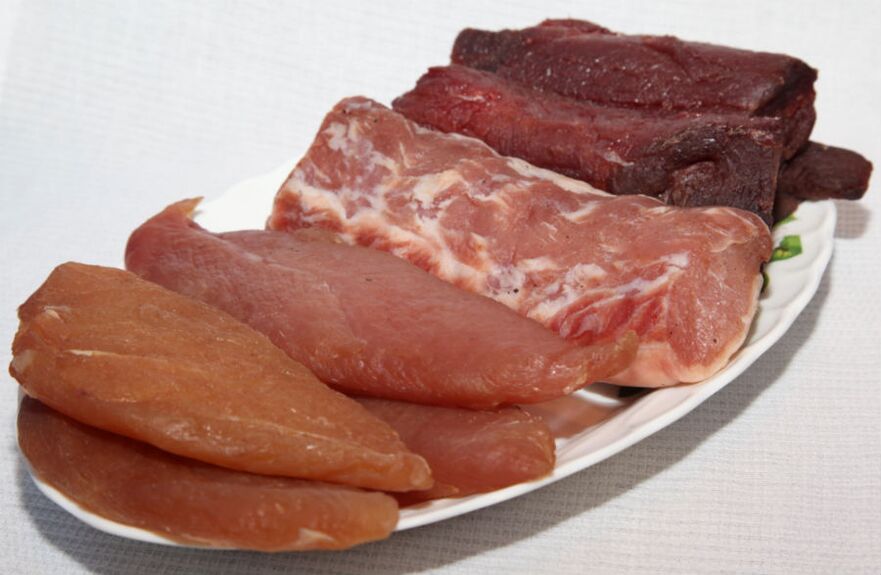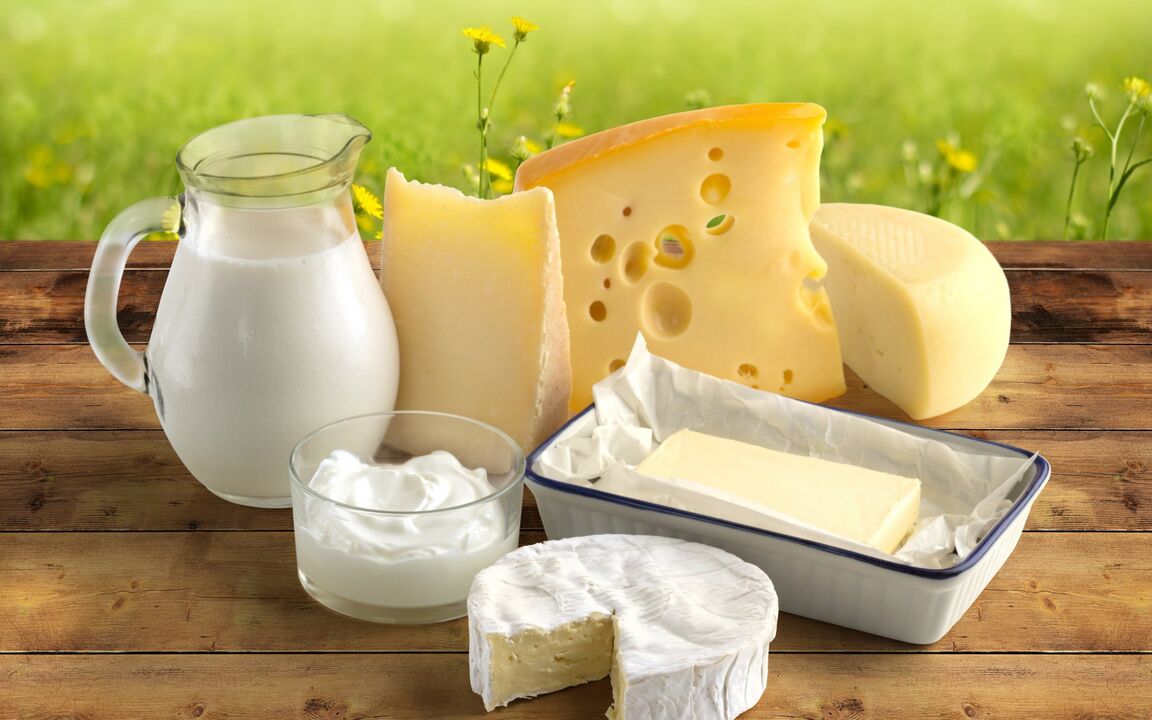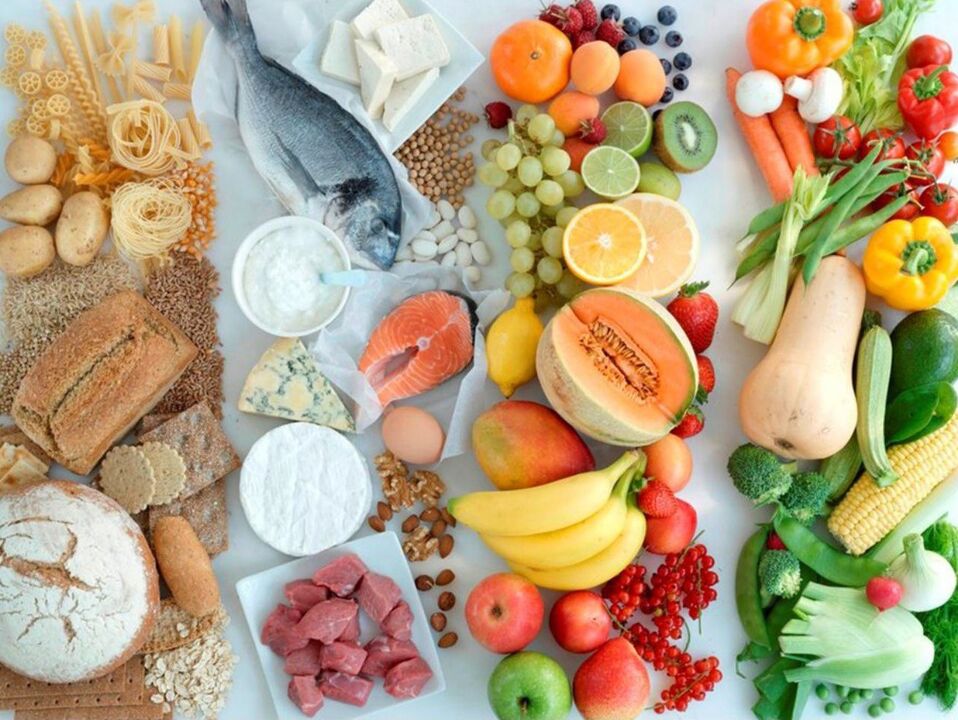
Proper nutrition is necessary for every person to maintain health and a beautiful toned body. The blood type diet is very popular, the principles of which imply the use of foods that are suitable for the patient according to genetic characteristics, namely, according to the blood type and Rh factor. Such a menu is based on enriching the diet with positive and neutral products, excluding prohibited foods.
Basic principles
It has been proven that overweight and many diseases in 90% of cases are the result of malnutrition. Hearing from the doctor the phrase that it is necessary to follow a diet, many patients fall into despair, because for most of them it is rather difficult to limit themselves in their diet. A blood type diet helps to lose extra pounds and prevent the development of various diseases without much difficulty. At the same time, the patient does not need to count calories and give up favorite foods. All that needs to be done is to exclude only some foods from the diet, and the desired result will not be long in coming.
American physician James D'Amado, as a result of his many years of research, suggested that there are positive, negative and neutral foods for each blood group. The scientist argued that foods that are good for some people can harm other patients. Based on this, we can conclude that nature itself tells a person what kind of food he should eat.
Pros and cons
The opinions of representatives of official medicine about such a diet differ. Some argue that nutrition according to James d'Amado is not a panacea and can even harm the patient with a particular disease. Proponents of the opposite point of view insist that a blood type diet is an excellent way to lose weight and prevent many ailments, which should be used not once, but throughout a person's life. Like many diets, genetic eating has its pros and cons.
In developing his diet, James d'Amado was guided by the principles that when a person is not properly eaten, a conflict of proteins from food and antibodies occurs in the human blood. But from a scientific point of view, it is known that, entering the body, any protein dissolves to amino acids, and antibodies cannot determine their origin.
Despite its obvious disadvantages, the blood type diet has its advantages. Nutrition helps to normalize body weight by reducing the intake of total calories in the body. The meals included in the diet are wholesome and healthy. The table includes a variety of products, so the food is complete and balanced.

Important! Thanks to strict adherence to certain rules, it is possible to provide the patient with sufficient energy, saturate the body with useful vitamins and minerals.
Diet principles
To achieve optimal results, it is necessary to strictly follow the principles and recommendations of the d'Amado treatment table. These include:
- division of all people into four types. The blood group is usually denoted by numbers or letters. For example, in our country, the values 1, 2, 3 and 4 are used blood group, in America the first group is designated as O, the second - A, the third - B and the fourth - AB;
- all people, depending on their genetic characteristics, should include in their diet only permitted foods and a small portion of neutral ones. The prohibited ones should be completely abandoned, because if you use them in large quantities, this can lead to obesity, the development of many dangerous diseases;
- sufficient physical activity is required. The author of the dietary table, in addition to recommended and prohibited products, has selected appropriate types of exercise for patients. For example, for men with the second group, he recommended yoga, race walking, swimming. For the first group - strength training, weightlifting;
- introduction of food additives into the diet. Some components are not supplied in sufficient quantities due to dietary restrictions. To compensate for their deficiency, the author recommends taking additional vitamin complexes.
The above principles are fundamental, and if you eat right, the author of the diet promises a positive result in a few months.
Are there any contraindications
Another advantage of the diet is that blood type nutrition has practically no contraindications. Foods can be combined, as opposed to separate meals. An exception is considered to be personal intolerance to certain dishes. But even if the patient has an allergic reaction to certain types of food, they can always be replaced with analogues. This makes the d'Amado table stand out from other tougher diets.

In addition, it is necessary to take into account the presence of concomitant diseases in a person. If, for example, a patient suffers from hypertension or other cardiovascular pathologies, fatty meat dishes should be excluded from the menu even for representatives of the first group, despite the fact that the diet for the first blood group includes a large amount of meat products. At the same time, people suffering from anemia should not give up meat, even if it is shown mainly plant and protein foods.
Another aspect is age characteristics. Preschool children, who are meat eaters in the group, cannot make a menu only from this product. Elderly patients suffering from osteoporosis and other diseases are not recommended to completely abandon calcium-containing foods, even if the basis of their diet should include only meat dishes.
Summing up, we can say that before following a diet, it is imperative to undergo a comprehensive medical examination and consult with a specialist. Especially when it comes to people with diseases such as diabetes mellitus, pathology of the kidneys, liver, heart and other organs.
Recommended and prohibited foods by group
In the course of medical research, it turned out that depending on the blood group, all people have different food preferences and other individual characteristics.
"Hunters" or the first group
It is believed that it was from this group that all the others descended in the course of natural evolution. About 30% of all people in the world belong to "hunters". A diet for 1 blood group, according to experts, should include a large amount of proteins (fish and meat, except pork), legumes and seafood. To divide food into harmful, healthy and neutral foods, it is customary to use the dietary table by blood group.

List of products for the first group:
| Useful | Forbidden | Neutral |
| Beef and lamb meat | Pork | Chicken's meat |
| Turkey fillet | Duck | Crayfish |
| Rabbit | Goose | Eggs |
| Beef liver and heart | Lard | Hazelnut |
| Seaweed | Salty river and sea fish |
Almond |
| Trout, pike and fresh herring | Pickled herring | Black beans |
| Olive and flax oil | Whole milk | Asparagus |
| Cherries | Kefir | Beans |
| Cherry plum | Ice cream | Rice and rice flour |
| Apples | Sour cream | Green pea |
| Fig | Poppy | Granulated sugar |
| Dried fruits | Peanut | Carrot |
| All types of salad | Pistachios | Onion |
| Beet | Corn and Cotton Oil | Pepper |
| Bell pepper | Lentils | Cucumbers |
| Sweet potato | Pasta | Tomatoes |
| Parey bow | Semolina | Currant |
| Broccoli | Oatmeal | Cranberry |
| Parsley | Bread products made from coarse flour | Green tea |
| Soy cheese and milk | Champignon | |
| Diluted juices | Avocado | |
| Dried fruit compotes | Alcohol | |
| Herbal teas | Sparkling water | |
| Uzvars | Strong tea and coffee |
Important! If there are contraindications to any of the products recommended for use, it should be replaced with an analogue or completely excluded.
"Farmers", or the second group
The blood group 2 diet should include a small amount of meat and enough protein, soy, legumes, fish and other foods. Fresh vegetables and fruits (with the exception of citrus fruits, bananas, coconuts) are very useful for these people. Sugar should be consumed in moderation, but not completely cut out.

List of prohibited, permitted and neutral foods for blood group 2:
| Useful | Forbidden | Neutral |
| Mackerel | Duck | Pickles |
| Spinach | goose | Marinades |
| Carrot | Pork | Sunflower seeds |
| Broccoli | Salo | Vanilla |
| Mushrooms | Beef | Caraway |
| All kinds of apples | Fatty sea fish | Pearl barley |
| Plums | Crayfish | Pine nuts |
| Lemon | Squid | Almond |
| Quail eggs | Offal | Hazelnut |
| Buckwheat porridge | Sweet potato | Raspberries |
| Pumpkin seeds | Coconut milk and shavings | Garnet |
| Rye flour products | Pistachios | Pear |
| Spotted beans | Semolina and wheat porridge | Strawberry |
| Soy | Black bread | Raisin |
| Pumpkin and olive oil | Ketchup | Grape |
| Red wine | Mayonnaise | Parsley |
| Coffee | Strong tea | Beet |
| Apricot, pineapple, cherry, apple, carrot juice |
Lemonade | Asparagus |
| Not too sweet compotes | Beer | Horseradish |
| Zucchini | ||
| Radish | ||
| Birch, apple, cranberry, pomegranate juice | ||
| White wine |
Meals for blood group 2 should include healthy and neutral foods, while the latter are recommended to be limited.
"Nomads", or the third group
It is believed that this genetic type arose as a result of the migration of individual races. According to statistics, about 20% of the entire earth's population has a 3 blood group. Moreover, 3 positive is much more common. "Nomads" are distinguished by their omnivorous nature. Their menu should include meat, fish, dairy products, but there are also prohibited dishes.

Proper nutrition for the third group:
| Useful | Forbidden | Neutral |
| Hen | Heart | Serum |
| Eggs | Pork | Cream |
| Lamb meat | Duck | Cow cheese |
| Hake | goose | Asparagus |
| Fresh and pickled herring | Liver | Oyster mushrooms |
| Lean sea and river fish | Lard | Champignon |
| Cottage cheese | Smoked sea fish | Onion |
| Kefir | Fatty varieties of river and sea fish |
Cucumbers |
| Sheep cheese | Shrimps | Zucchini |
| Sweet potato | Pumpkin | Prunes |
| Broccoli | Olives | Peach |
| Green apples | Nuts on fatty oily base |
Strawberry |
| Coconut flakes | Pearl barley | Citruses |
| Non-acidic plums | Black beans | Nuts in large quantity |
| Rice and oatmeal | Spotted beans | Pasta |
| Soy | Bakery products from coarse flour |
Semolina |
| Wheat and oat bread | Ice cream | Asparagus and white beans |
| Poppy seeds | Peanut, soybean, corn, sunflower oil | Durum wheat pasta |
| Olives and olive oil | Alcoholic drinks | Honey |
| Green tea | Pomegranate and tomato juice | Chocolate |
| Cranberry, pineapple, grape juice | Lemonade | Butter |
| Chamomile and rosehip broth | Strongly brewed tea and coffee | |
| Alcoholic drinks | ||
| Carbonated sweet water |
The 3 blood type diet includes foods that are best suited to this genetic type, help maintain weight within the normal range, and prevent many diseases.
Important! The genetic type diet is recognized by many world nutritionists, has won many reviews from people of a positive nature.
"Mixed type", or the fourth group
The fourth group, according to scientists, occurred during the merger of two types - the first and the second. This type is considered the rarest. Its bearers are no more than 7% of the world's population. Group 4 positive is more common, and negative is considered the rarest on the planet. The Type 4 diet includes a fairly varied list of foods.

A diet for blood group 4 should be formulated using the following foods:
| Useful | Forbidden | Neutral |
| Lean meats | Hen | Flaxseed, peanut, soybean oil |
| River and sea fish, preferably boiled and baked | Heart | Pine nuts |
| Whole milk | Duck | Pistachios |
| Low fat cheese | goose | Almond |
| Cottage cheese dishes | Sunflower and pumpkin seeds | Honey |
| Bean Dishes | Buckwheat porridge and buckwheat flour products | Nutmeg |
| Lentils | White wine vinegar | Paprika |
| Spotted beans | Marinades | Sugar |
| Oatmeal | Pickles | Pumpkin |
| Rice | Tangerines | Champignon |
| Oatmeal cookies | Ketchup | Nectarines |
| Rye flour products | Radish | Peaches |
| All types of salad and greens | Radish | Blackberry |
| Kari | Salad | Red berries |
| Cucumbers | Rhubarb | Jerusalem artichoke |
| Bell pepper | Persimmon | Brussels sprouts and white cabbage |
| Beetroot | Oranges | Potato |
| Celery | Avocado | Coriander |
| Jerusalem artichoke | Garnet | Cinnamon |
| Cauliflower | Bananas | Mayonnaise |
| Herbal teas | Black pepper | Bay leaf |
| Decoction of hawthorn, rose hips | Lime tea | Zucchini |
| Coffee | Broth of mother and stepmother | Spinach |
| Green tea | Strong black tea | White and red wine |
| Carbonated sugary drinks | Beer | |
| Lemonade | ||
| Alcohol |
Important! The table shows that the list of products is quite wide, so it is very easy to compose a dietary menu based on them.
For each genetic type according to blood group, the diet has its own characteristics. The desired result can be achieved only with the strict implementation of the author's recommendations and the complete rejection of prohibited products. The peculiarity of such a menu is that the table is designed for a smooth and safe weight loss, restoration of all vital functions of the body.

Menu for the first genetic type
One of the diet options for 1 blood group per day is as follows:
- morning - boiled or baked fish meat, vegetable salad, pineapple, cherry or carrot juice;
- day - raw or baked vegetables, boiled meat, a bean dish or porridge, dried fruit compote;
- evening - porridge with vegetables, herbal tea.
As already mentioned, food for the first blood group should include a sufficient amount of meat and fish, since this genetic type belongs to the "hunters".
Menu for the second genetic type
The diet for the second blood group should be based on healthy and unhealthy foods. An approximate daily menu looks like this:
- morning - lean fish or meat, a glass of kefir, fresh or baked vegetables;
- day - legumes or porridge, fish stew, apple fruit cuts, prunes, herbal tea;
- evening - spotted bean puree, pineapple or cherry juice.
A Type 2 diet should include recommended meals and neutral foods. Even if you cannot immediately completely abandon forbidden foods, do not despair. It is necessary to switch to a healthy diet gradually so that it does not cause a person strong moral discomfort.
Menu for the third genetic type
Meals for 3 blood groups for 1 day may look like this:
- morning - one or two chicken steamed cutlets with a side dish of bell pepper and carrots, fruits, herbal tea;
- day - oat bread with sheep cheese, cottage cheese, cranberry juice;
- evening - dinner for the first blood group may include baked trout, pike or halibut, steam omelet, green tea.
People with group 3 can independently compose the menu based on the data in the table. Don't be afraid to experiment and use new recipes. This will help to diversify your diet and improve your mood.
Menu for the fourth genetic type
The fourth type of people includes the second and third blood groups. Their menu is distinguished by mixed dishes, should be saturated with fish, meat, cereals, dairy products. An approximate menu for 1 day may look like this:
- morning - boiled or baked rabbit, sweet pepper and cucumber salad, seasoned with olive oil, coffee;
- day - goat cheese casserole, fruit slices of kiwi, grapefruit, pineapple, grape or cherry juice;
- evening - rye bread with sheep cheese, stewed vegetables, green tea.
Supporters of blood type nutrition believe that such a diet is very effective and helps not only to reduce weight, but also to prevent most diseases. If you decide to use it, you should find out your blood type and feel free to switch to proper nutrition. To prevent negative consequences, be sure to consult your doctor.













































